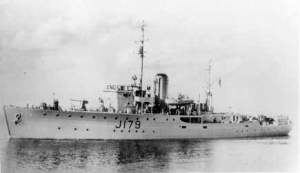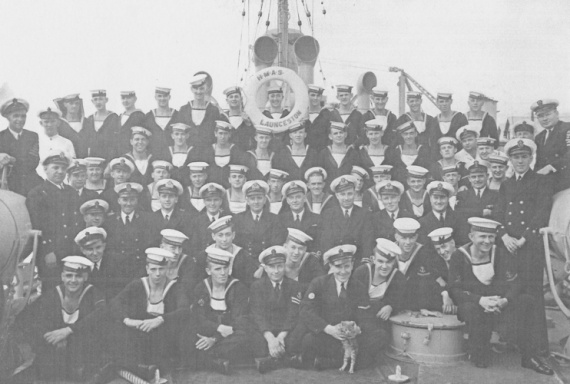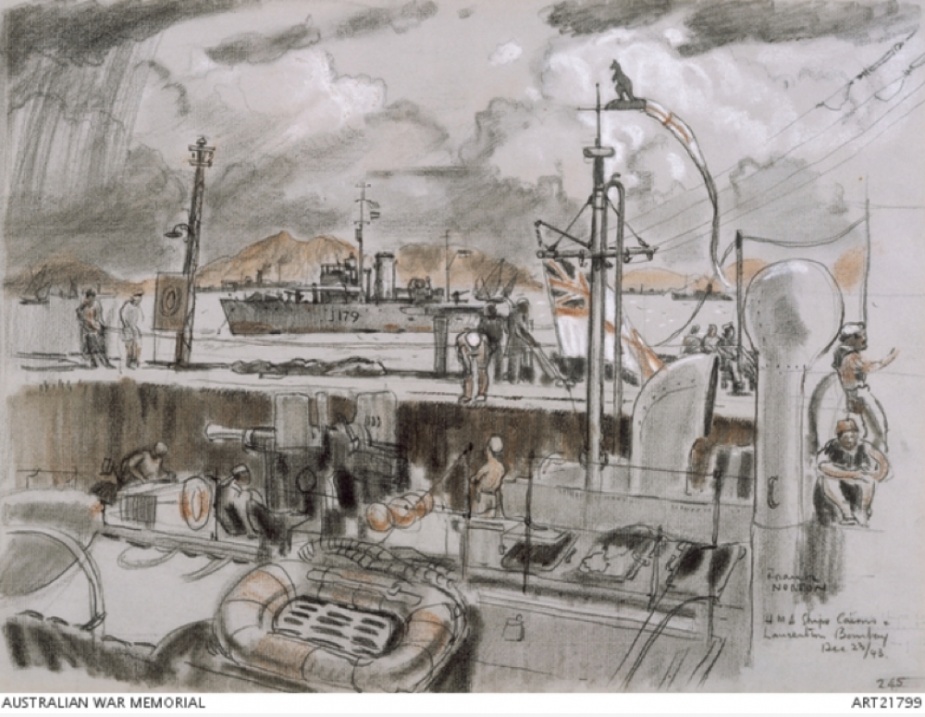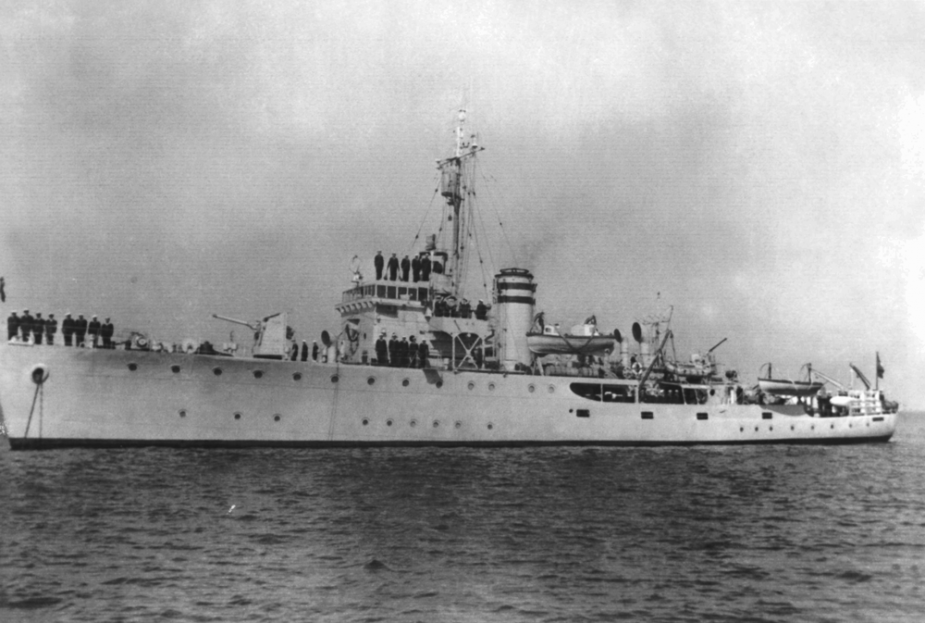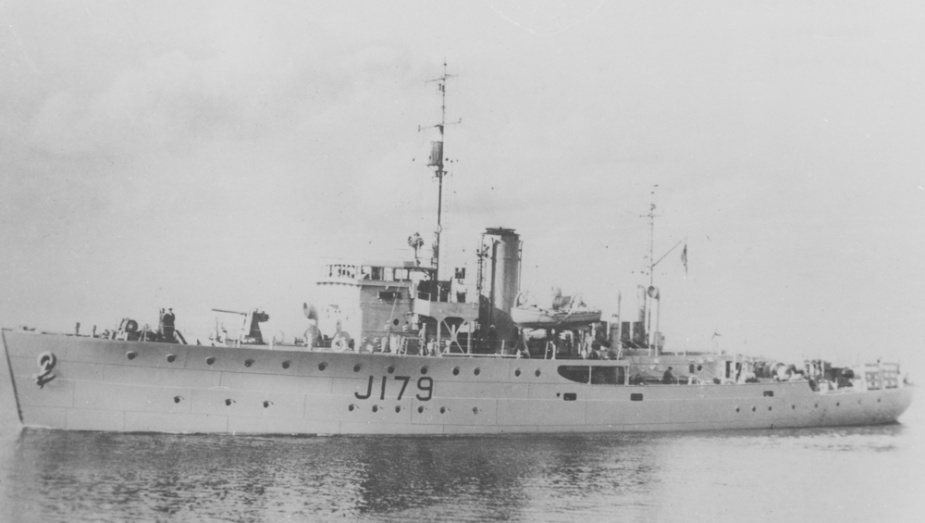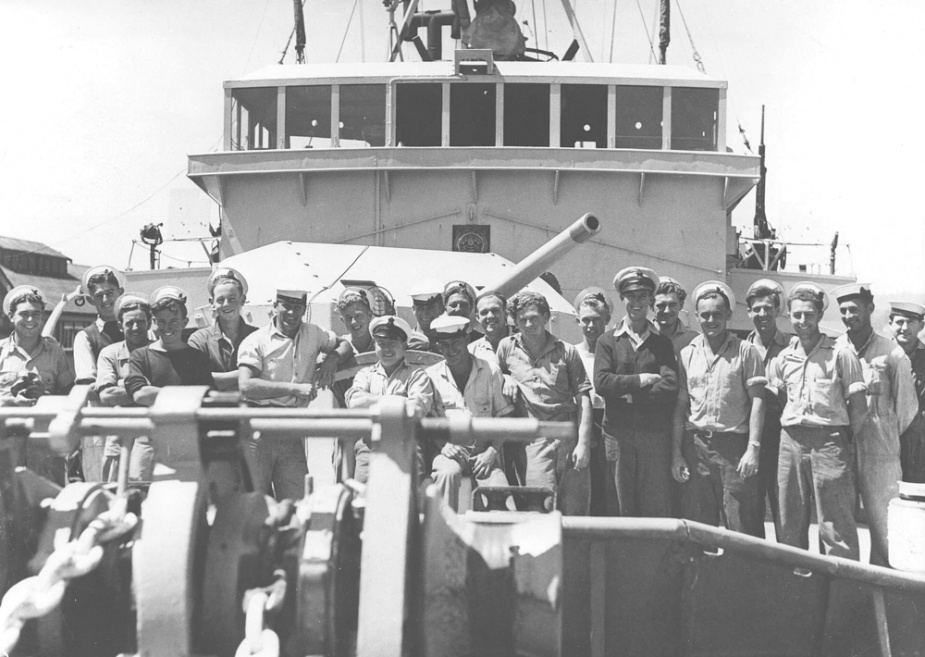HMAS Launceston (I)
| Class |
Bathurst Class |
|---|---|
| Type |
Australian Minesweeper |
| Pennant |
J179 |
| Builder |
Evans Deakin & Co Ltd, Brisbane |
| Laid Down |
23 December 1940 |
| Launched |
30 June 1941 |
| Launched by |
Mrs Forgan-Smith, wife of the Premier of Queensland |
| Commissioned |
9 April 1942 |
| Decommissioned |
23 March 1946 |
| Dimensions & Displacement | |
| Displacement | 650 tons |
| Length | 186 feet |
| Beam | 31 feet |
| Draught | 8 feet 6 inches |
| Performance | |
| Speed | 15 knots |
| Complement | |
| Crew | 85 |
| Propulsion | |
| Machinery | Triple expansion, 2 shafts |
| Horsepower | 2000 |
| Armament | |
| Guns |
|
| Other Armament |
|
| Awards | |
| Battle Honours | |
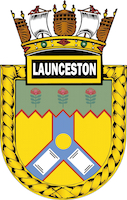
HMAS Launceston was one of sixty Australian Minesweepers (commonly known as corvettes) built during World War II in Australian shipyards as part of the Commonwealth Government's wartime shipbuilding programme. Twenty (including Launceston) were built on Admiralty order but manned and commissioned by the Royal Australian Navy. Thirty six were built for the Royal Australian Navy and four for the Royal Indian Navy.
HMAS Launceston was laid down at Evans Deakin & Co Ltd, Brisbane, Queensland on 23 December 1940. She was launched on 30 June 1941 by Mrs Forgan-Smith, wife of the Premier of Queensland, and was the first RAN warship to carry the name of the city in the north of Tasmania at the junction of the North Esk and South Esk rivers where they became the Tamar River.
Launceston commissioned at Brisbane on 9 April 1942 under the command of Lieutenant Commander Percy G Collins RANR(S).
On completion of trials Launceston was employed on escort duty around the coast of Australia until she left for Colombo in September 1942 to join the Eastern Fleet. She was then engaged in escorting convoys in the Indian Ocean and on 11 February 1944, aided by her sister ship HMAS Ipswich and the Indian sloop HMIS Jumna, destroyed the Japanese submarine RO-110 off the east coast of India.
Launceston continued her escorts between Aden and Hormuz, Khor Kuwai, Bombay and Karachi and also between Chittagong and Vizagapatam and Bombay.
Returning to Fremantle for refit in September 1944, Launceston remained in the Fremantle area on anti-submarine patrols until February 1945 when she proceeded to Manus, escorting en route. She then participated in the operation for the capture of Okinawa (March-May 1945). After the end of hostilities she was based at Hong Kong for minesweeping and patrol duties.
Launceston arrived at Brisbane on 29 October 1945 and then paid official visits to the town of Launceston from 16 to 25 December, and Hobart on 28 December where she was the flagship for the Hobart Regatta, before proceeding to Sydney, where she arrived on 11 January 1946.
After a refit at Sydney, Launceston paid off about mid March 1946, having steamed 136,064 miles. She recommissioned in the Royal Navy and on 21 May 1946, as HMS Launceston, sailed for Colombo in company with her sister ships Gawler and Pirie. All were destined for transfer to the Turkish Navy.
As a unit of the Turkish Navy, Launceston originally bore the name Ayancik and was later renamed Hamit Naci. 'Jane's Fighting Ships' reported that she was withdrawn from service in 1965.
Further reading
- 'Notable Service to the Empire: Australian Corvettes and the British Pacific Fleet, 1944-45' by Hugh Campbell. Published by Naval Historical Society of Australia, Inc. 1995.
- 'The Corvettes: Forgotten Ships of the Royal Australian Navy' by Iris Nesdale - published by the author, October, 1982.
- 'Corvettes - Little Ships for Big Men' by Frank B Walker - published by Kingfisher Press, NSW, 1996.
- 'The Australian Centenary History of Defence Volume III, The Royal Australian Navy', edited by David Stevens, Oxford University Press, South Melbourne, Victoria, Australia, 2001.

